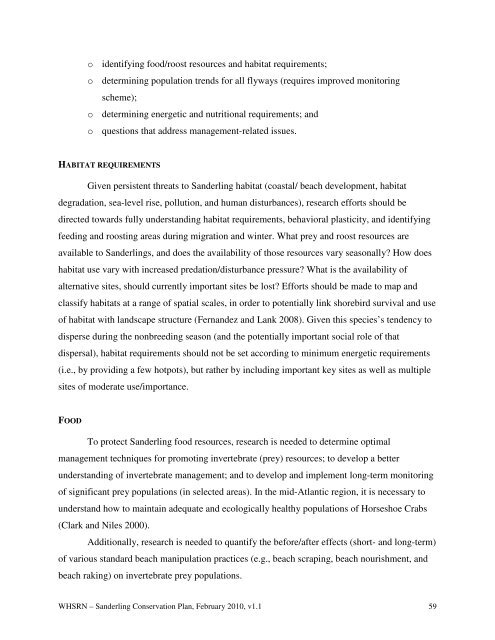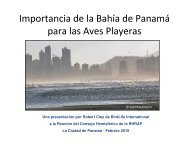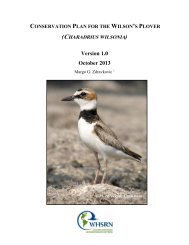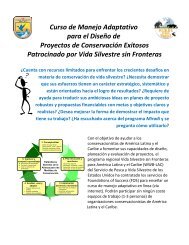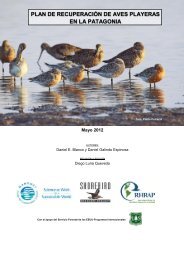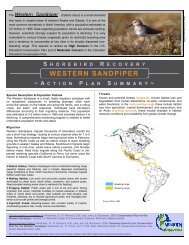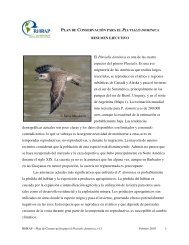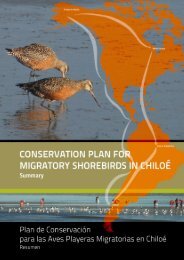Sanderling Plan - Western Hemisphere Shorebird Reserve Network
Sanderling Plan - Western Hemisphere Shorebird Reserve Network
Sanderling Plan - Western Hemisphere Shorebird Reserve Network
You also want an ePaper? Increase the reach of your titles
YUMPU automatically turns print PDFs into web optimized ePapers that Google loves.
o identifying food/roost resources and habitat requirements;<br />
o determining population trends for all flyways (requires improved monitoring<br />
scheme);<br />
o determining energetic and nutritional requirements; and<br />
o questions that address management-related issues.<br />
HABITAT REQUIREMENTS<br />
Given persistent threats to <strong>Sanderling</strong> habitat (coastal/ beach development, habitat<br />
degradation, sea-level rise, pollution, and human disturbances), research efforts should be<br />
directed towards fully understanding habitat requirements, behavioral plasticity, and identifying<br />
feeding and roosting areas during migration and winter. What prey and roost resources are<br />
available to <strong>Sanderling</strong>s, and does the availability of those resources vary seasonally? How does<br />
habitat use vary with increased predation/disturbance pressure? What is the availability of<br />
alternative sites, should currently important sites be lost? Efforts should be made to map and<br />
classify habitats at a range of spatial scales, in order to potentially link shorebird survival and use<br />
of habitat with landscape structure (Fernandez and Lank 2008). Given this species’s tendency to<br />
disperse during the nonbreeding season (and the potentially important social role of that<br />
dispersal), habitat requirements should not be set according to minimum energetic requirements<br />
(i.e., by providing a few hotpots), but rather by including important key sites as well as multiple<br />
sites of moderate use/importance.<br />
FOOD<br />
To protect <strong>Sanderling</strong> food resources, research is needed to determine optimal<br />
management techniques for promoting invertebrate (prey) resources; to develop a better<br />
understanding of invertebrate management; and to develop and implement long-term monitoring<br />
of significant prey populations (in selected areas). In the mid-Atlantic region, it is necessary to<br />
understand how to maintain adequate and ecologically healthy populations of Horseshoe Crabs<br />
(Clark and Niles 2000).<br />
Additionally, research is needed to quantify the before/after effects (short- and long-term)<br />
of various standard beach manipulation practices (e.g., beach scraping, beach nourishment, and<br />
beach raking) on invertebrate prey populations.<br />
WHSRN – <strong>Sanderling</strong> Conservation <strong>Plan</strong>, February 2010, v1.1 59


